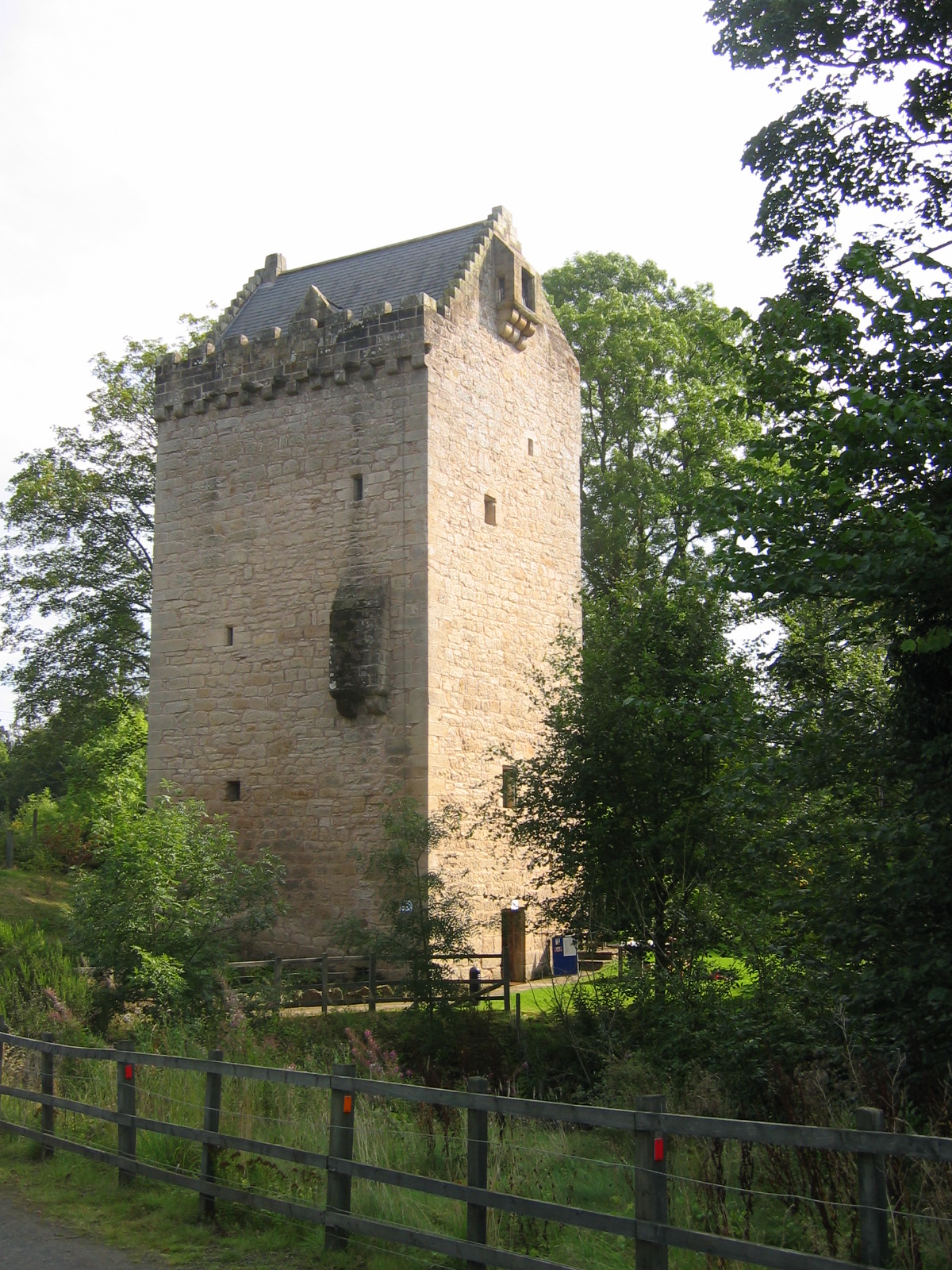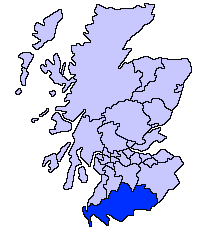|
Edingham Castle
Edingham Castle is a late 16th-century tower house situated near Dalbeattie, Dumfries and Galloway. It is the remains of an early tower house built for the Livingstones of Little Airds. It is near Edingham Munitions Factory and is a scheduled ancient monument. Edingham Castle was built as a four-story tower in 1570-1585 by the Morrisons. They were succeeded by the Afflecks in 1660. Later, in the 1700s this became the McVicar-Afflecks. It was roofless by 1872 when it was purchased by John Hutinson. The remains measure 8.6 meters x 7.2 meters. See also * Scheduled monuments in Dumfries and Galloway * List of Category A listed buildings in Dumfries and Galloway This is a list of Category A listed buildings in Dumfries and Galloway, Scotland. In Scotland, the term listed building refers to a building or other structure officially designated as being of "special architectural or historic interest". ... References * * External links Edingham Castle at dalbeattiematters.c ... [...More Info...] [...Related Items...] OR: [Wikipedia] [Google] [Baidu] |
Dalbeattie
Dalbeattie (, sco, Dawbeattie, gd, Dail Bheithe meaning 'haugh of the birch' or ''Dail'' ''bhàite'' 'drowned (''i.e.'' liable to flood) haugh') is a town in the historical county of Kirkcudbrightshire in Dumfries and Galloway, Scotland. Dalbeattie is in a wooded valley on the Urr Water east of Castle Douglas and south west of Dumfries. The town is famed for its granite industry and for being the home town of William McMaster Murdoch, the First Officer of the RMS ''Titanic''. Etymology Dalbeattie is a Gaelic name, recorded in 1469 as ''Dalbaty''. The first element of the name is Gaelic ''dail'' 'water-meadow, haugh'. There are two possible interpretations for the second element. The most common is Gaelic ''beithich'', genitive singular of ''beitheach'' 'abounding in or relating to birch trees', derived from ''beith'' 'birch'. Dalbeattie would thus mean 'haugh of the birch'. The second interpretation takes -''beattie'' to be ''bhàite'' (from ''bàite'') 'drowned', mean ... [...More Info...] [...Related Items...] OR: [Wikipedia] [Google] [Baidu] |
Dumfries And Galloway
Dumfries and Galloway ( sco, Dumfries an Gallowa; gd, Dùn Phrìs is Gall-Ghaidhealaibh) is one of 32 unitary council areas of Scotland and is located in the western Southern Uplands. It covers the historic counties of Dumfriesshire, Kirkcudbrightshire, and Wigtownshire, the latter two of which are collectively known as Galloway. The administrative centre and largest settlement is the town of Dumfries. The second largest town is Stranraer, on the North Channel coast, some to the west of Dumfries. Following the 1975 reorganisation of local government in Scotland, the three counties were joined to form a single region of Dumfries and Galloway, with four districts within it. The districts were abolished in 1996, since when Dumfries and Galloway has been a unitary local authority. For lieutenancy purposes, the area is divided into three lieutenancy areas called Dumfries, Wigtown and the Stewartry of Kirkcudbright, broadly corresponding to the three historic counties. ... [...More Info...] [...Related Items...] OR: [Wikipedia] [Google] [Baidu] |
Scotland
Scotland (, ) is a country that is part of the United Kingdom. Covering the northern third of the island of Great Britain, mainland Scotland has a border with England to the southeast and is otherwise surrounded by the Atlantic Ocean to the north and west, the North Sea to the northeast and east, and the Irish Sea to the south. It also contains more than 790 islands, principally in the archipelagos of the Hebrides and the Northern Isles. Most of the population, including the capital Edinburgh, is concentrated in the Central Belt—the plain between the Scottish Highlands and the Southern Uplands—in the Scottish Lowlands. Scotland is divided into 32 administrative subdivisions or local authorities, known as council areas. Glasgow City is the largest council area in terms of population, with Highland being the largest in terms of area. Limited self-governing power, covering matters such as education, social services and roads and transportation, is devolved from the ... [...More Info...] [...Related Items...] OR: [Wikipedia] [Google] [Baidu] |
Edingham Castle
Edingham Castle is a late 16th-century tower house situated near Dalbeattie, Dumfries and Galloway. It is the remains of an early tower house built for the Livingstones of Little Airds. It is near Edingham Munitions Factory and is a scheduled ancient monument. Edingham Castle was built as a four-story tower in 1570-1585 by the Morrisons. They were succeeded by the Afflecks in 1660. Later, in the 1700s this became the McVicar-Afflecks. It was roofless by 1872 when it was purchased by John Hutinson. The remains measure 8.6 meters x 7.2 meters. See also * Scheduled monuments in Dumfries and Galloway * List of Category A listed buildings in Dumfries and Galloway This is a list of Category A listed buildings in Dumfries and Galloway, Scotland. In Scotland, the term listed building refers to a building or other structure officially designated as being of "special architectural or historic interest". ... References * * External links Edingham Castle at dalbeattiematters.c ... [...More Info...] [...Related Items...] OR: [Wikipedia] [Google] [Baidu] |
Tower House
A tower house is a particular type of stone structure, built for defensive purposes as well as habitation. Tower houses began to appear in the Middle Ages, especially in mountainous or limited access areas, in order to command and defend strategic points with reduced forces. At the same time, they were also used as an aristocrat's residence, around which a castle town was often constructed. Europe After their initial appearance in Ireland, Scotland, the Frisian lands, Basque Country and England during the High Middle Ages, tower houses were also built in other parts of western Europe, especially in parts of France and Italy. In Italian medieval communes, urban ''palazzi'' with a very tall tower were increasingly built by the local highly competitive patrician families as power centres during times of internal strife. Most north Italian cities had a number of these by the end of the Middles Ages, but few now remain, notably two towers in Bologna, twenty towers in Pa ... [...More Info...] [...Related Items...] OR: [Wikipedia] [Google] [Baidu] |
Scheduled Ancient Monument
In the United Kingdom, a scheduled monument is a nationally important archaeological site or historic building, given protection against unauthorised change. The various pieces of legislation that legally protect heritage assets from damage and destruction are grouped under the term "designation." The protection provided to scheduled monuments is given under the Ancient Monuments and Archaeological Areas Act 1979, which is a different law from that used for listed buildings (which fall within the town and country planning system). A heritage asset is a part of the historic environment that is valued because of its historic, archaeological, architectural or artistic interest. Only some of these are judged to be important enough to have extra legal protection through designation. There are about 20,000 scheduled monuments in England representing about 37,000 heritage assets. Of the tens of thousands of scheduled monuments in the UK, most are inconspicuous archaeological sites, but ... [...More Info...] [...Related Items...] OR: [Wikipedia] [Google] [Baidu] |
Scheduled Monuments In Dumfries And Galloway
A scheduled monument in Scotland is a nationally important archaeological site or monument which is given legal protection by being placed on a list (or "schedule") maintained by Historic Environment Scotland. The aim of scheduling is to preserve the country's most significant sites and monuments as far as possible in the form in which they have been inherited. The process of scheduling is governed by the Ancient Monuments and Archaeological Areas Act 1979 The Ancient Monuments and Archaeological Areas Act 1979 or AMAAA was a law passed by the UK government, the latest in a series of Ancient Monument Acts legislating to protect the archaeological heritage of England & Wales and Scotland. Norther ..., which aims "to make provision for the investigation, preservation and recording of matters of archaeological or historical interest". The term "scheduled monument" can apply to the whole range of archaeological sites which have been deliberately constructed by human activity ... [...More Info...] [...Related Items...] OR: [Wikipedia] [Google] [Baidu] |
List Of Category A Listed Buildings In Dumfries And Galloway
This is a list of Category A listed buildings in Dumfries and Galloway, Scotland. In Scotland, the term listed building refers to a building or other structure officially designated as being of "special architectural or historic interest". Category A structures are those considered to be "buildings of national or international importance, either architectural or historic, or fine little-altered examples of some particular period, style or building type." Listing was begun by a provision in the Town and Country Planning (Scotland) Act 1947, and the current legislative basis for listing is the Planning (Listed Buildings and Conservation Areas) (Scotland) Act 1997. The authority for listing rests with Historic Scotland, an executive agency of the Scottish Government, which inherited this role from the Scottish Development Department in 1991. Once listed, severe restrictions are imposed on the modifications allowed to a building's structure or its fittings. Listed building cons ... [...More Info...] [...Related Items...] OR: [Wikipedia] [Google] [Baidu] |
Castles In Dumfries And Galloway
A castle is a type of fortified structure built during the Middle Ages predominantly by the nobility or royalty and by military orders. Scholars debate the scope of the word ''castle'', but usually consider it to be the private fortified residence of a lord or noble. This is distinct from a palace, which is not fortified; from a fortress, which was not always a residence for royalty or nobility; from a ''pleasance'' which was a walled-in residence for nobility, but not adequately fortified; and from a fortified settlement, which was a public defence – though there are many similarities among these types of construction. Use of the term has varied over time and has also been applied to structures such as hill forts and 19th-20th century homes built to resemble castles. Over the approximately 900 years when genuine castles were built, they took on a great many forms with many different features, although some, such as curtain walls, arrowslits, and portcullises, were ... [...More Info...] [...Related Items...] OR: [Wikipedia] [Google] [Baidu] |





